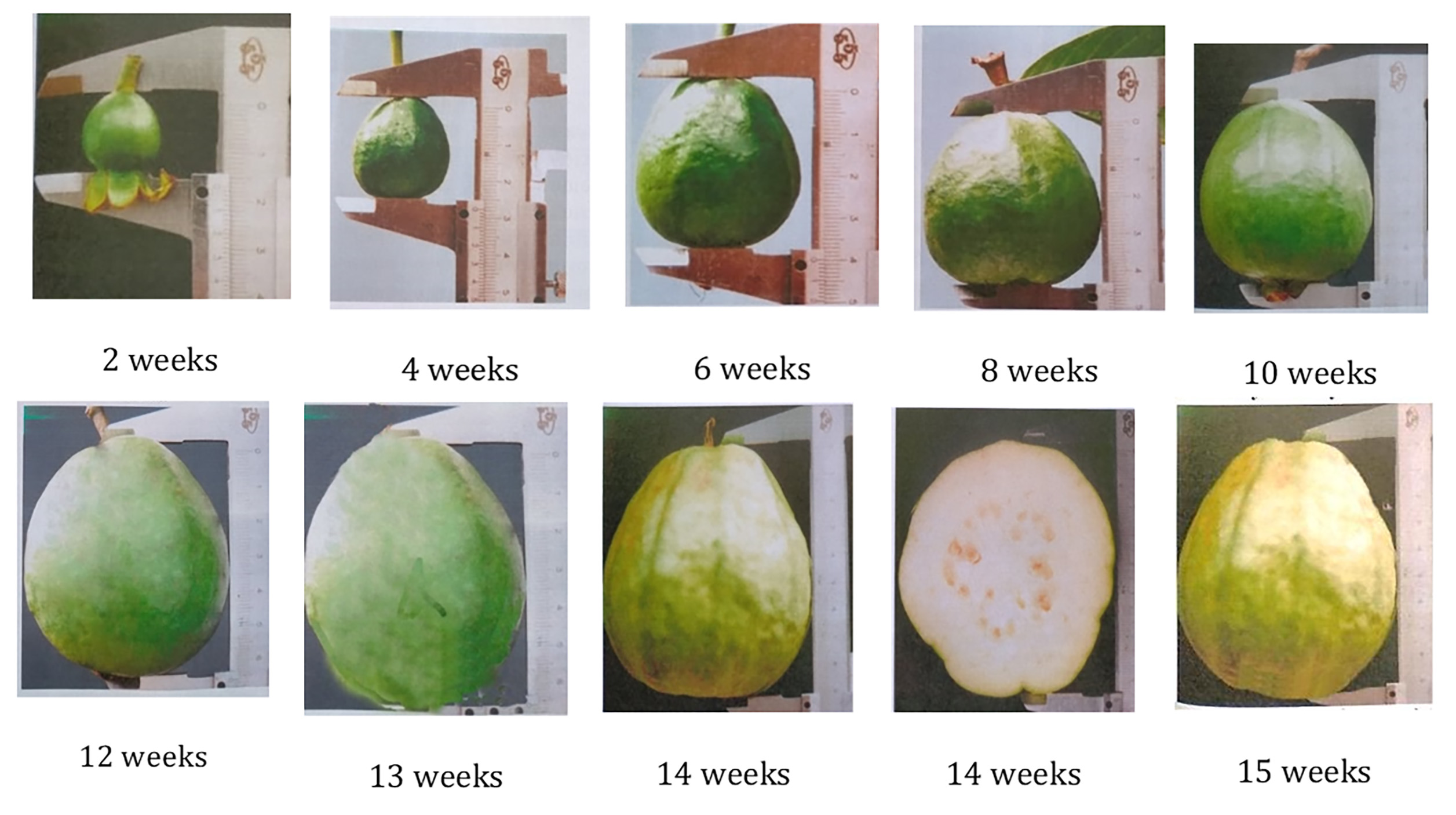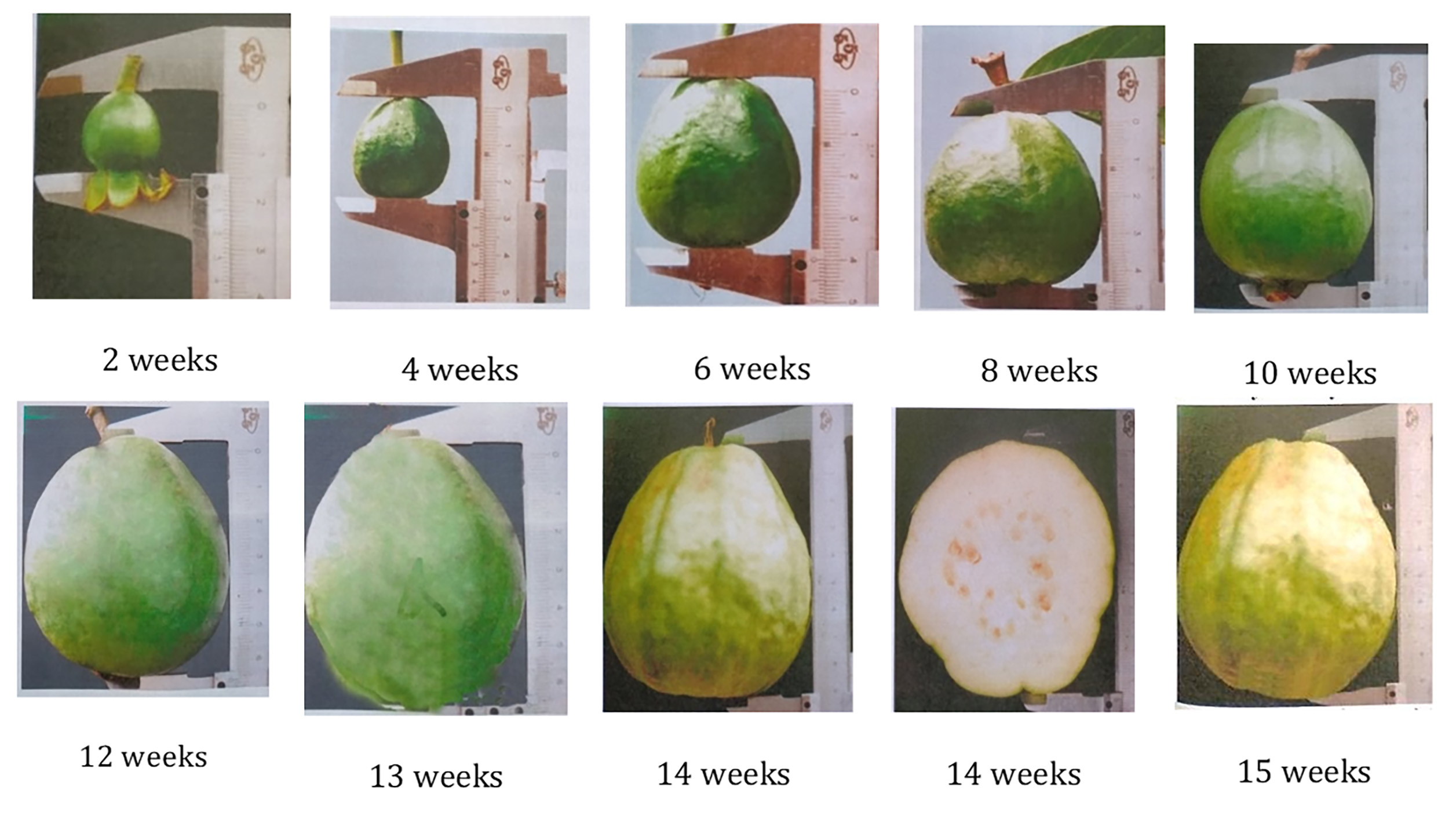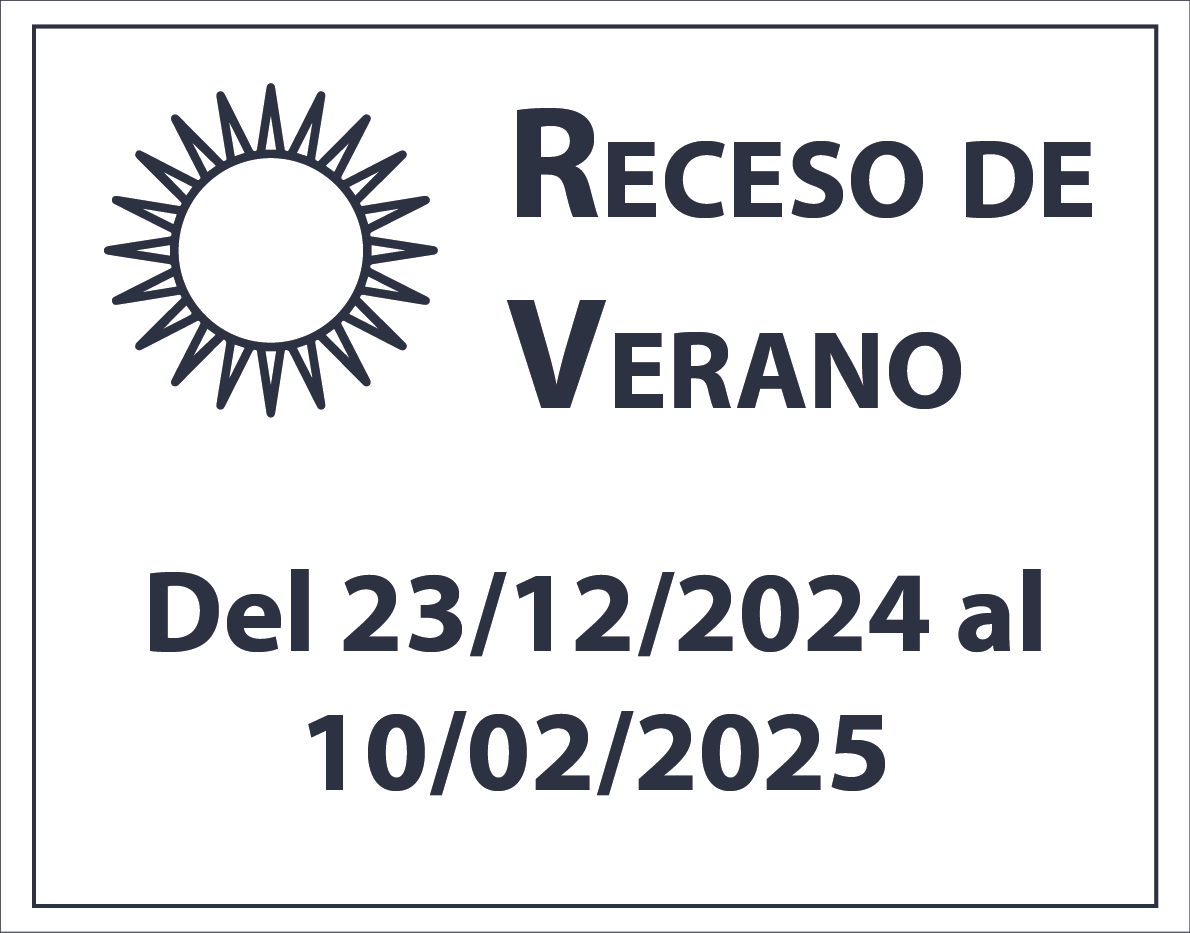Changes in physiological and biochemical parameters during the growth and development of guava fruit (Psidium guajava) grown in Vietnam
DOI:
https://doi.org/10.48162/rev.39.042Palabras clave:
guayaba, maduraciónResumen
 This research examined the ripening time of guava fruit to provide a scientific basis for better harvesting and preservation of these fruits. Biochemical research methods were used to analyse changes in physiological and biochemical parameters according to the growth and development of guava fruit. The fruit took 14 weeks after anthesis to reach its maximum size in terms of length and diameter. The chlorophyll content in guava peel peaked after 10 weeks, decreasing until week 15. The content of carotenoids, which was low at fruit formation, rose rapidly until fruit ripening, while the vitamin C and reducing sugar contents increased continuously and peaked at week 14. A gradual increase was seen in the starch and total organic acid contents from the beginning of fruit formation, with peaks at 10 weeks, followed by a moderate downward trend. The pectin content showed the same trend, as it declined gradually after peaking at 12 weeks. The first 4 weeks showed an increase in the tannin content, which decreased afterward. The study results show that guava fruit should be harvested after physiological maturity and before ripening completely (14 weeks) to ensure that the nutritional value of the fruit is maintained during storage.
This research examined the ripening time of guava fruit to provide a scientific basis for better harvesting and preservation of these fruits. Biochemical research methods were used to analyse changes in physiological and biochemical parameters according to the growth and development of guava fruit. The fruit took 14 weeks after anthesis to reach its maximum size in terms of length and diameter. The chlorophyll content in guava peel peaked after 10 weeks, decreasing until week 15. The content of carotenoids, which was low at fruit formation, rose rapidly until fruit ripening, while the vitamin C and reducing sugar contents increased continuously and peaked at week 14. A gradual increase was seen in the starch and total organic acid contents from the beginning of fruit formation, with peaks at 10 weeks, followed by a moderate downward trend. The pectin content showed the same trend, as it declined gradually after peaking at 12 weeks. The first 4 weeks showed an increase in the tannin content, which decreased afterward. The study results show that guava fruit should be harvested after physiological maturity and before ripening completely (14 weeks) to ensure that the nutritional value of the fruit is maintained during storage.
Highlights
• Xa Li guava at 14 week after anthesis to reach its maximum size in terms of length and diameter.
• The chlorophyll content in guava peel peaked after 10 weeks, decreasing until week 15. The content of carotenoids, which was low at fruit formation, rose rapidly until fruit ripening.
• The vitamin C and reducing sugar contents peaked at week 14. A gradual increase was seen in the starch and total organic acid contents and peaks at 10 weeks, followed by a moderate downward trend.
• The pectin content showed the same trend, as it declined gradually after peaking at 12 weeks. The first 4 weeks showed an increase in the tannin content, which decreased afterward.

Descargas
Publicado
Número
Sección
Licencia
Derechos de autor 2018 Revista de la Facultad de Ciencias Agrarias UNCuyo

Esta obra está bajo una licencia internacional Creative Commons Reconocimiento-NoComercial-CompartirIgual 3.0.
Aquellos autores/as que tengan publicaciones con esta revista, aceptan las Políticas Editoriales.



